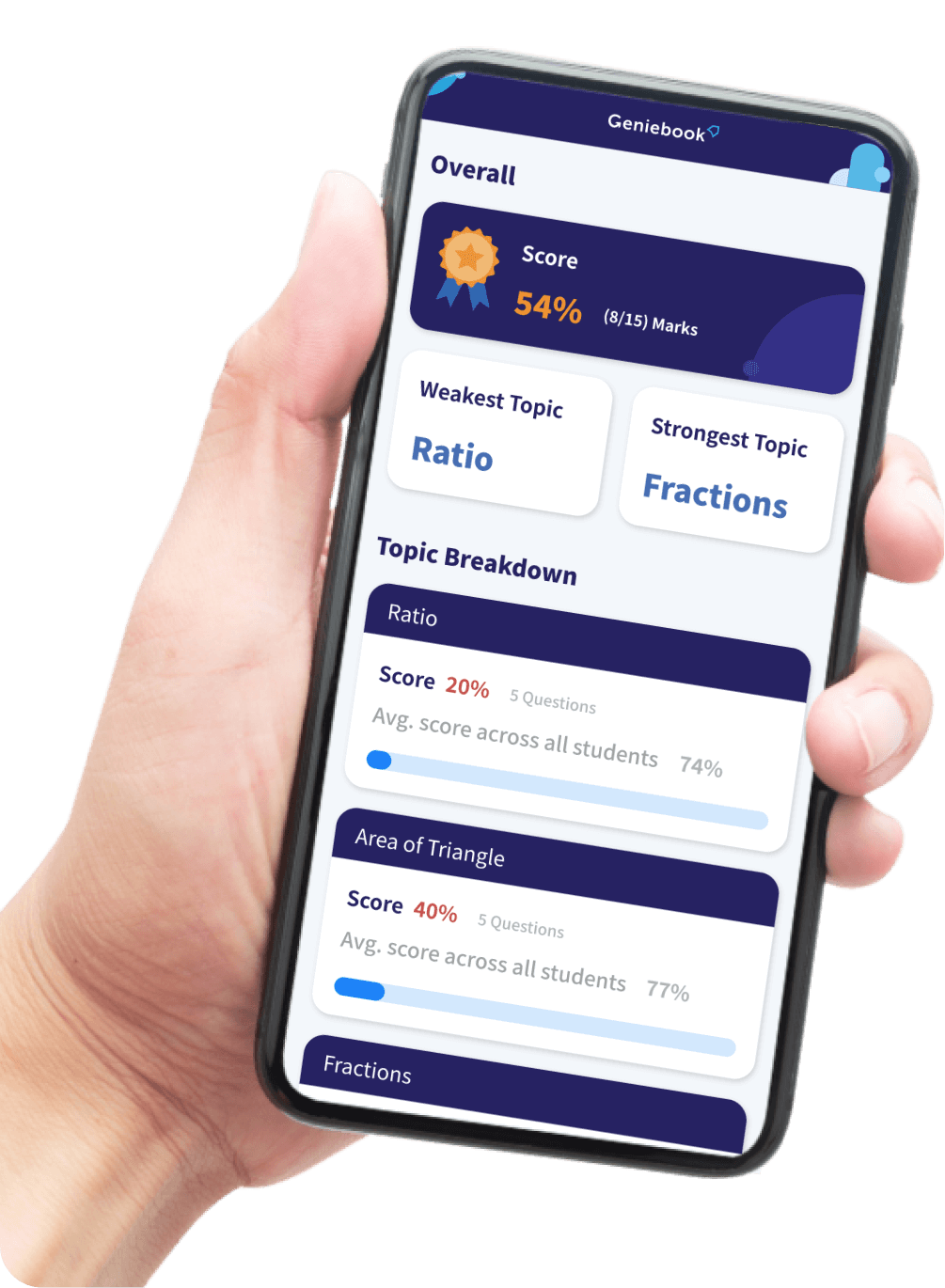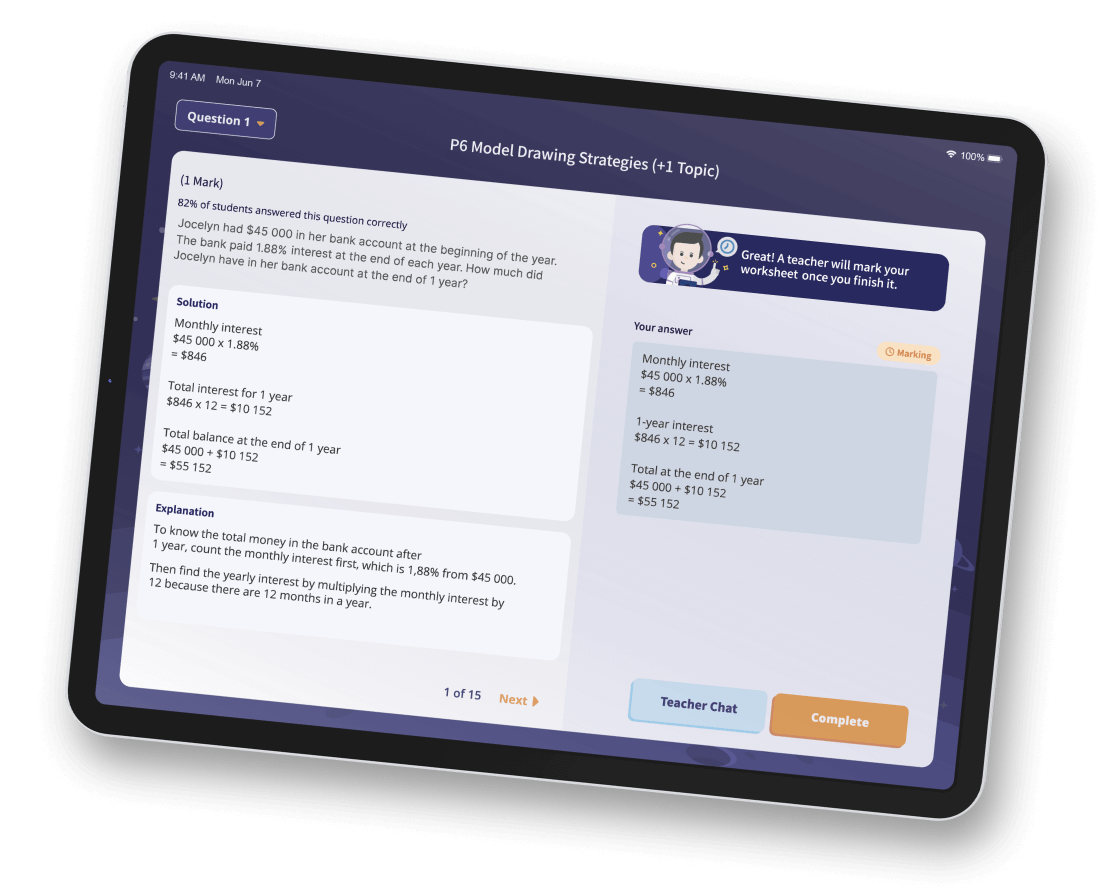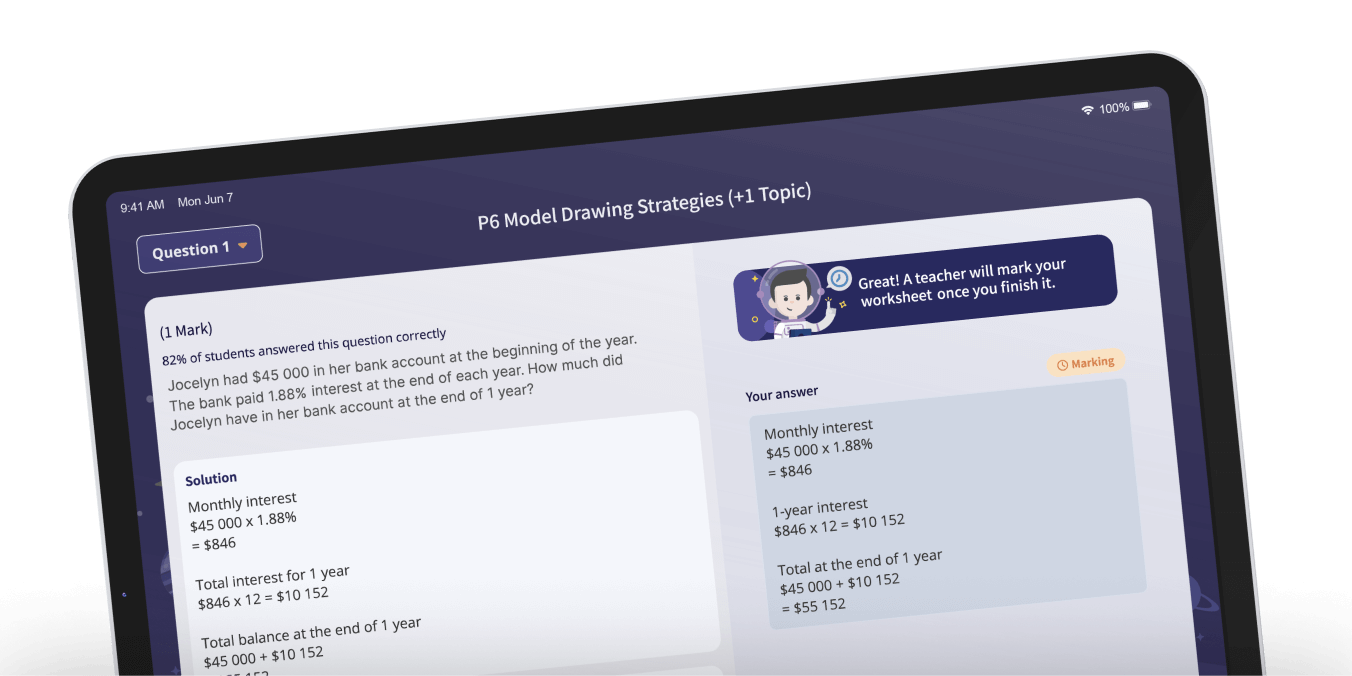Primary 2 Maths
The primary 2 Mathematics syllabus is broadly divided into 3 categories: Numbers and Algebra, Measurements and Geometry, and Statistics. Building on what was taught in Primary 1, students will work with an expanded range of numbers (up to 1000) and be introduced to more advanced concepts such as fraction and decimal notation into the equation. On top of that, students also get to learn about new topics such as Mass and Volume, and more.
Download Exam Papers
Click here for free Primary 2 Maths worksheets!
Strategies For Teaching Primary 2 Mathematics
Be generous with positive reinforcement
When teaching Primary 2 Mathematics, it is crucial to provide frequent positive reinforcement and feedback. Feedback helps children to recognize their strengths and weaknesses and identify areas that require improvement. Parents and educators can offer constructive feedback by highlighting specific errors or areas where the child can improve, while also praising the child's achievements. Not only do positive reinforcement and feedback enhance students' motivation and engagement in the learning process, but it also promotes the development of a growth mindset and encourages a love for learning.
Connect Maths to everyday life
One effective way to teach Primary 2 Mathematics is to use everyday examples that children can relate to. For instance, parents can use household items such as measuring cups, clocks, and calendars to teach concepts such as time, measurement, and basic operations. Additionally, parents can encourage their child to count money, such as coins and bills, and use it as an opportunity to teach addition, subtraction, and money concepts. Another approach is to use real-life scenarios and problem-solving activities, such as calculating how much paint is needed to cover a room or measuring ingredients for a recipe. By incorporating these examples, parents can help their child see the practical applications of Mathematics in everyday life, making the subject more relevant and engaging.
How to make learning Primary 2 Mathematics fun?
Learning Primary 2 Mathematics can be made fun by incorporating creative and interactive activities. Parents can use card games, puzzles, and online resources to make learning Maths engaging and enjoyable for their child. For example, they can use board games like Snakes and Ladders or card games like Uno to teach addition and subtraction. They can also use educational apps and websites that provide interactive Maths exercises and quizzes. For children who are up for a challenge, join Geniebook Arena to participate in daily quizzes and earn exciting rewards! Last but not least, parents can incorporate Maths into everyday activities like cooking, grocery shopping, and measuring to make it more practical and relatable for their child. By making learning Maths fun and interesting, children are more likely to stay motivated and develop a positive attitude towards the subject.
Common challenges when teaching Primary 2 Mathematics
For many parents, teaching Primary 2 Mathematics at home can pose several challenges. Firstly, finding suitable resources and materials to support students’ learning is often a challenge in itself. More often than not, worksheets and exercises are either too easy or too difficult, making it challenging to find appropriate activities that match one's ability. Secondly, study session has to be engaging and interactive in order to hold students’ attention and keep their motivation up. Last but not least, being familiar with the syllabus and knowing how to explain concepts effectively often remains every parent’s greatest challenge. In particular, busy parents who need to juggle family and work.
Frequently Asked Questions (FAQs)
What are some common topics covered in Primary 2 Maths?
In Primary 2 Math, students learn a variety of mathematical concepts and skills, including basic arithmetic, place value, time, money, measurement, geometry, and problem-solving. These topics are covered throughout the school year and students have opportunities to practice their skills through worksheets, activities, and classroom discussions. By the end of Primary 2 Math, students should have a solid foundation in these topics and be prepared for more advanced mathematical concepts in the future.
How can parents help their children with Primary 2 Maths homework?
Parents can play a crucial role in supporting their child's learning and progress in Primary 2 Maths. To do this, they can create a positive learning environment by encouraging their child to enjoy learning and praising their efforts and progress. Parents can also review their child's classwork and homework regularly to identify areas where they might need extra help. They can provide guidance and support by explaining concepts in a way that their child can understand, using real-life examples and hands-on activities to make learning fun and engaging. It is also important to encourage regular practice to reinforce learning, using worksheets, games, and other resources to help their child practice different concepts. Parents can communicate regularly with their child's teacher to stay informed about their progress and areas where they may need additional support. Additionally, it is important to avoid rushing through homework, allowing the child to work at their own pace and take breaks if needed. Celebrating their child's successes and achievements, no matter how small, will help build their confidence and motivation to learn. By following these tips, parents can help their child develop a strong foundation in Primary 2 Maths and set them up for success in the future.
What are some common mistakes Primary 2 students make in Maths?
Mathematics can be challenging for Primary 2 students in a variety of ways. For example, they may struggle with place value, leading to mistakes in calculations and comparisons. They could also confuse addition and subtraction, have difficulty with basic facts, and misunderstand multiplication. Furthermore, word problems can be tricky, and recognising patterns and relationships between numbers can be challenging. Students may also mix up units of measurement. As parents and teachers, it's crucial to empathize with these difficulties and identify common mistakes to provide the necessary support and guidance to help students overcome these challenges. By addressing these issues, parents can help students establish a solid foundation in Mathematics, boost their confidence, and enhance their overall understanding of the subject.
What resources are available to help children with Primary 2 Maths?
There are many resources available to help children with Primary 2 Maths. Parents can find a variety of online and print materials such as worksheets, videos, and educational games designed to reinforce essential Maths concepts. Alternatively, you can build a strong foundation with Geniebook’s learning products. With engaging online lessons and smart worksheets designed by our team of experienced teachers, your child gets all the help they need for a solid headstart.
Popular Searches
English | Maths | Grammar And Vocabulary | Grammar And Editing | Grammar And Comprehension | Numbers To 10 | Shapes | Addition And Subtraction Within 10 | P1 Exam Test Papers
English | Maths | Prepositions | Comprehension | Editing | Tenses / Subject-Verb Agreement | Multiplication And Division | Fractions | Volume | P2 Exam Test Papers
English | Maths | Science | Volume | Fractions | Bar Graphs | Angles | Tenses | Editing | Prepositions | Digestive System | Diversity Of Animals | Diversity Of Plants
English | Maths | Science | Comprehension | Adverbs | Adjectives | Multiplication | Decimals | Fractions | Matter | Animal Life Cycle | Light | P4 Exam Test Papers
English | Maths | Science | Pronouns: Demonstrative, Possessive & Reflexive | Verbs: Modals & Interrogatives | Synthesis & Transformation | Percentage, Fractions And Decimals | Ratio | Electrical Systems | Plant Reproduction: Structures And Pollination | P5 Exam Test Papers
English | Maths | Science | Composition Structure | Active And Passive Voice | Grammar Close & Visual Text | Algebra | Fractions Of Remainder | Interaction Of Forces: Friction | Interaction: Introduction to Force | P6 Exam Test Papers
Secondary 1 | S1 English | S1 Maths | S1 Science | Secondary 2 | S2 English | S2 Maths | S2 Science | Secondary 3 | S3 Maths | S3 Physics | S3 Chemistry | S3 E-Maths | S3 A-Maths | Secondary 4 | S4 Maths | S4 Physics | S4 Chemistry | S4 E-Maths | S4 A-Maths


 SG
SG  VN
VN 












